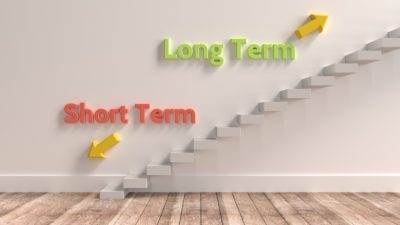For many investors, earning a second income is the main goal. One way to do this is by investing in stocks paying a dividend. These companies reward shareholders on a regular, often quarterly or biannually — but it’s worth remembering dividends are not guaranteed.
Another option is investing for share price growth. This could be a more risky strategy. Especially if I’m focusing on growth stocks. As we know, very few companies delivered the promised growth.
So dividend-paying stocks are the way forward for me. Let’s explore how this could work.
Stocks over bricks and mortar
I bought a property some years ago and started renting it out. My yield was near the upper end you’d expected in the south of England — around 5%.
Many of us have received marketing materials from developers in Liverpool or Newcastle promising 8% yields on their latest developments. But it wasn’t for me.
The thing is, buy-to-let has its challenges. Firstly, in the current interest rate climate, I could be lumbered with sizeable mortgage repayments eating into my margins. Equally, I’ve got to be concerned about voids — periods when I don’t have a renter. This can be costly.
Stocks offer me more flexibility. I can buy and sell in a matter of minutes and I can find larger yields than those offered in the housing market. Of course, there are risks too and buy-to-let has its advantages. For one, houses have, historically, offered more stability in value terms. The general trend in house prices is upwards.
As such, investing in stocks is my preference over houses.
Now or later?
If I had £5,000 to invest, I could target stocks with an aggregated 6.5% dividend yield in the current market. That would provide me with £325 annually. That’s a good return, and I can also hope for upwards movement in the share price.
I can also use a compound returns strategy. This is the process of earning interest on my interest by reinvesting my dividends each year. The longer I leave it, the more money I’ll eventually have. Naturally, this only makes sense if I don’t need the passive income now.
After 10 years of reinvesting my 6.5% yields, I’d have nearly doubled my original £5,000 — without taking into account share price growth. As such, I could generate at least £650 a year.
But compound returns work best over a longer period. After 30 years, I’d have £35,000 — without taking into account share price growth. From this, I could generate at least £2,275 a year.
However, as noted, this excludes share price growth. And it’s important to remember the FTSE 100 is roughly four times bigger today than it was 30 years ago. As such, £35,000 could theoretically be worth around £140,000, based on previous index performance — enough to generate £9,200 a year in dividends from a portfolio averaging 6.5%.
There’s a lot of variables here. But, broadly, this strategy would allow me to enhance my returns by investing over the long run.
For the strategy to work, I’d need to invest in stocks with sustainable yields and companies that are unlikely to disappear. I’d pick banks like Lloyds and financial services giants like Legal & General. The former offers a 4% yield — due to rise in the coming years — and the latter a 7.25% yield.








